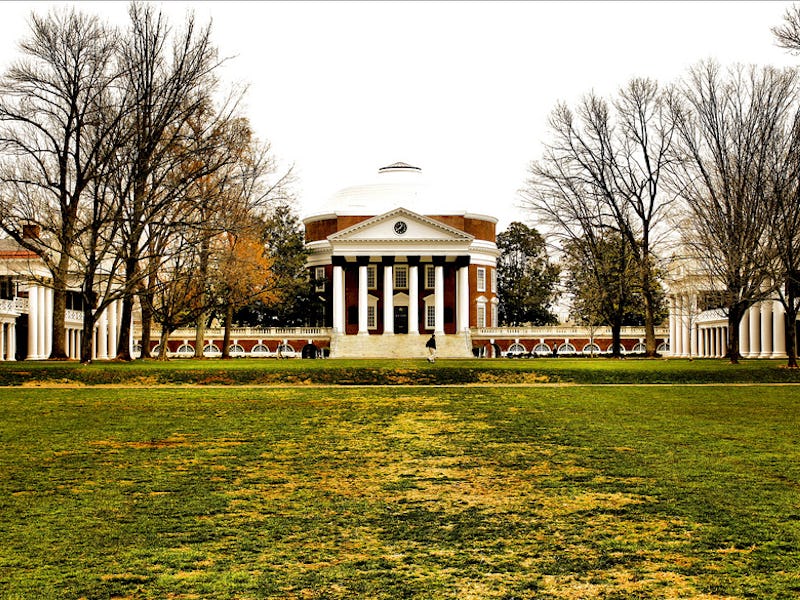Thomas Jefferson-Designed Chemistry Lab Unearthed at UVA
Thomas Jefferson founded the University of Virginia in 1819, and some hidden relics from that era are still there.

History-buffs and fans of spelunking will be pleased by a snippet of historical news that makes Thomas Jefferson look kind of similar to a character from Breaking Bad: The discovery of a 19th chemistry lab located in the bowels of the University of Virginia, designed in part by the third president himself.
“The hearth is significant as something of the University’s early academic years,” Mark Kutney, an architectural conservator in the University Architect’s office, said in a statement.
“The original arch above the opening will have to be reconstructed, but we hope to present the remainder of the hearth as essentially unrestored, preserving its evidence of use.”
Part of a science classroom built for use by John Emmet, UVA’s first professor of Natural History, the discovered chemical hearth was buried beneath bricks in a rotunda, and apparently spared destruction from a devastating fire in 1895.
If one were to dig through the historical record, the hearth also indicates Thomas Jefferson’s commitments to the study of science. According to UVA’s website, at the time of Professor Emmet’s career, chemistry was considered “the branch most eminently distinctive of the school.”
If it seems strange to build a primitive chemistry lab in the ground floor of an antebellum rotunda, an 1823 letter from Thomas Jefferson to the University’s Board of Visitors notes that the placement was strategic. A ground-floor lab stipulated that “water required in the experiments would not have to be pumped to the upper floors” of the building, according to a UVA press release.
Because of UVA’s early scientific focus, Brian Hogg, a senior historic preservation planner at University Architect’s office, thinks the discovery of the hearth is a bold find.
“This may be the oldest intact example of early chemical education in this country,” he said.
Thomas Jefferson would be proud.